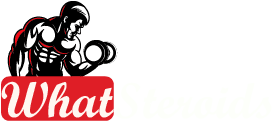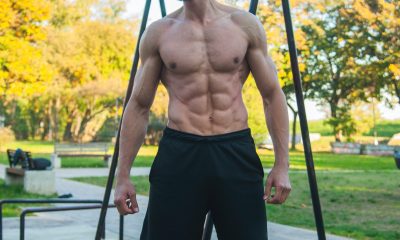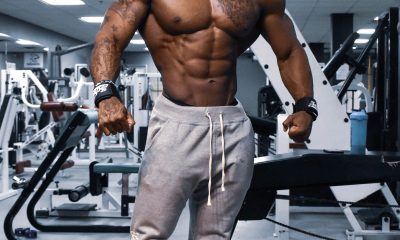Steroids
What is The Extent of Illicit Anabolic Steroid Use in The U.S?
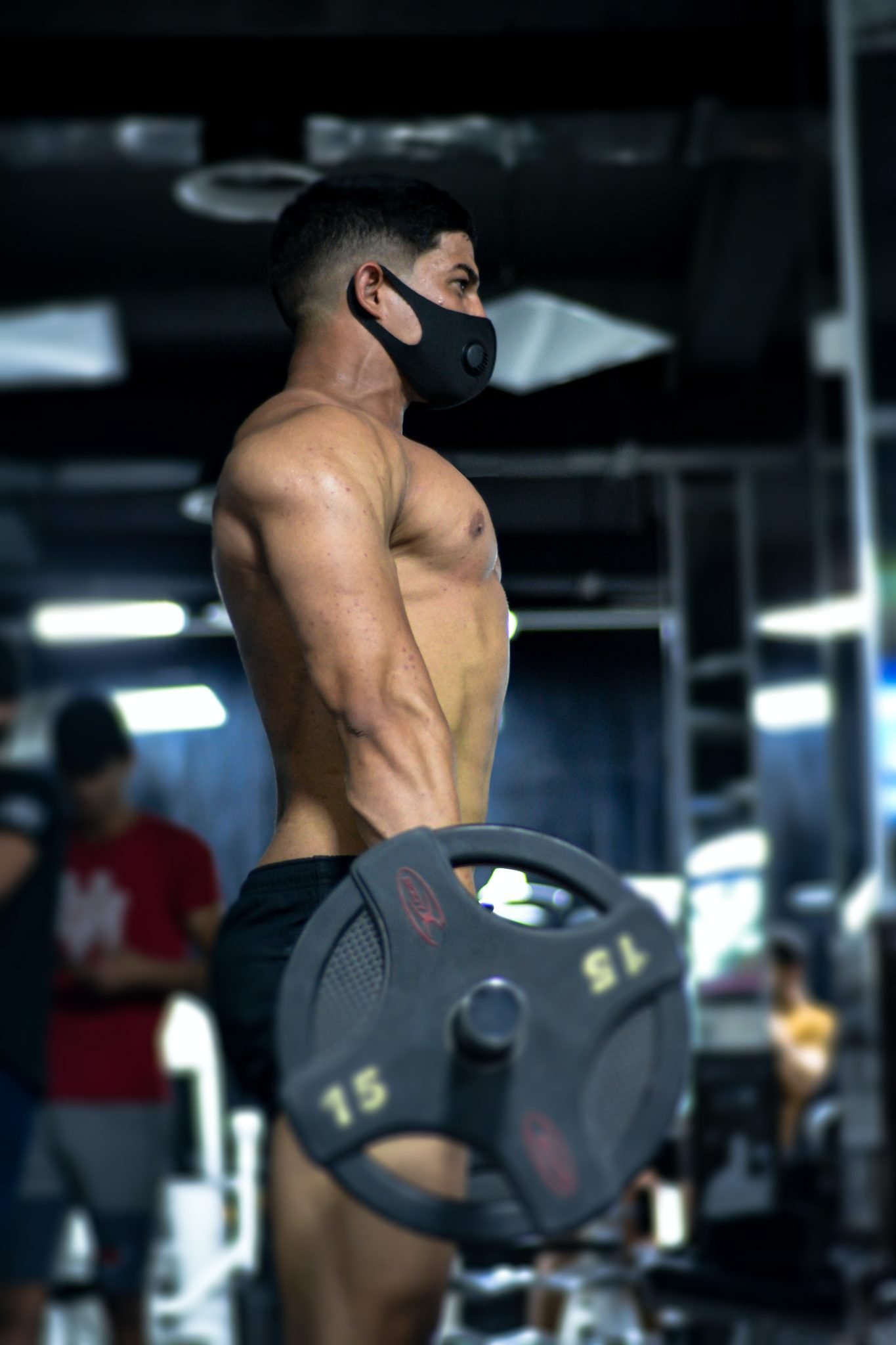
Anabolic Steroids:
Anabolic Steroids substances include male sex dihydrotestosterone and testosterone-hormone. These androgynous hormones promote potent sexual properties development such as voice deepening and growth of beard or other males associated characteristics. These anabolic steroids substances also stimulate additional tissues development, particularly muscle and bone mass, and production of RBCs.
These substances medically used to treat various disorders such as delayed puberty, hypogonadism, osteoporosis, and endometriosis, and other problems that result due to hormonal imbalances.
Anabolic Steroids Prohibition in Sports:
Anabolic steroids that include, for example, Oxandrolone, testosterone, Danabol, and Methyltestosterone agents are used by athletes to enhance performance by increasing muscle mass. The U.S. has prohibited the use of these substances due to their potential for developing adverse side-effects.
The U.S. Agency of Anti-Doping or USADA and Anti-Doping World Agency or WADA and International Committee of Olympic or IOC and National Association Collegiate Athletic or NCAA have included these substances in prohibited-substances lists.
In U.S.A The Limit of Illicit Steroids Use:
In the country of the USA, the street purchase and illegal use of these anabolic steroids substances are risky. Illicit steroids sold at sporting competitions, gyms or through the mail-order process. However, the products may be contaminated or altered products. Records show that these illicit steroid substances that smuggle from other countries or these illegally taken from pharmacies and manufactured in backside laboratories. Street names of these anabolic steroids are Juice, Pumpers, Gym candy, Roids, Andro, and Stackers.
Read More: Where Steroids Are Legal
Anabolic Steroids Abuses:
There is less statistical data available on steroids abuse as; usually, the drug abuse surveys have not included steroids. The scientific evidence from the NIDA institute indicated only ten percent abuse chances among athletes. In the 2017 school Survey, high professionals reported that people do not have an accurate perception of steroids harms. Through laboratory testing, anabolic steroids presence can detect, and athletes monitored for competitions to check drugs usage and dependence.
Read More: What is being done to combat Anabolic Steroids abuse?
Side Effects of Anabolic Steroids:
Anabolic steroids use alters body’s healthy balance of hormonal production. Some effects are reversible while some persist such as deepened voice and breast enlargement etc.
Side effects include severe acne, hair loss, liver disease, kidney disease, heart disease, mood swings, high BP, gynecomastia, shrinking testicles, azoospermia, menstrual irregularities, infertility, and bacterial infections.
Anabolic Steroids are Addictive
Users become psychologically and physically dependent. Drug-dependent behavior results due to extended drug use while physical withdrawal problems such as fatigue, mood swings, appetite loss, restlessness, insomnia, steroid cravings, and less sex drive are the consequences. Severe withdrawal issues may cause a high depression level, and even the person can suicide due to high mental pressure. The conditions may persist even after one year of drug stoppage.
Through proper treatments and recovery cycles interventions, anabolic addiction, and anabolic impacts can manage. Antidepressants and analgesics, and behavioral therapies suggest for recovery purposes.
Combat With Anabolic Steroids Use and Abuse:
To limit the use of anabolic steroids, the focus is on educational efforts to promote awareness about steroid abuse. The programs initiated by NIDA such as The ATLAS or Adolescents Learning and Training for Steroids Avoidance, and the ATHENA program or Athletes Targeted Healthy Nutrition and Exercise Alternatives programs. The Health and Science, Oregon University programs, are the focus on teaching athletes about natural bodybuilding.
Read More: What to Choose Between Natural Bodybuilding And Steroids?
The programs are about nutrition alternatives and weight-training, healthy behaviors, steroids avoidance, and avoidance of alcoholic use.
Major Steroids Addiction in US Society:
Athletes take high steroids’ doses that lead to health disorders. The increasing use of these substances is a threat to public health. Also, it is essential to quantify the prevalence of Anabolic Steroids use. There are fewer data available on AAS prevalence and use, and these substances have been least studied because these are said as newly introduced substances. However, athletes started to use AAS during the 1950s, and the use increased after 1980s in the US.
The age distribution pattern of Anabolic Steroids users showed that youth is the significant addition or user of steroids since the 1980s. There has been observed a continuous increase in AAS users; however, sparse data has complicated the more accurate prevalence estimations. It requires methodological surveys to access the AAS users and to find the extent of AAS use. Moreover, people hesitate to talk about their steroid experience.
Research evidence
The comparative analyses of AAS users consider in the US context. As the US country is most famous for AAS use, and there are the AAS users in the most significant numbers. The illicit use of anabolic steroids in the US arose before other countries as American culture valued particularly-shaped man figure. U.S movies, dramas, and fitness magazines promoted heroes with bulky and muscular bodies. The US population has the most significant proportion of anabolic steroid users. There have been least surveys conducted on AAS since 1994.
A study revealed that Americans with age group of 13–50 were 108.5 million users that increased to 103.6–113.5 million during 1990–2011.
During the Youth-survey 1991, the data gathered from America’s High-schools revealed that AAS use was every day among 1oth to 12th graders. Mathematical models predicted that currently, more than 4.0 M American population depends on AAS.
MTF data shows that young adults of age group 19–28 were AAS users cover 3.1 million of Americans since 1989 to 2011and there was a steady increase in AAS users, while the age group of 19–22 were 3.7 M Americans who were AAS users from 1993 to 2001data estimates. The 2001 survey reported 1.05% lifetime prevalence, and the lifetime steroid prevalence in the US is 2–3 times higher than that was in 1994.
Research studies by Pope et al., and Malone et al., revealed that 2.9 to 4.0M Americans had used anabolic steroids and 1 million among them developed AAS dependence.
Interesting Facts:
- Fewer data generate on these aspects because youngsters use this during their 20s time-age and parents don't observe them. Usually, the AAS discussed for athletes, while the vast majority does not belong to competitive athletes groups. Moreover, AAS users did not consult with physicians as the study determined that AAS users about 56% never disclosed about AAS use and the emergence of disorders.
- Steroidal supplements modified into testosterone compounds. Steroidal dietary supplements, for example, tetrahydrogestrinone and androstenedione, from food stores without prescription, but their use, now forbidden and illegal after Steroid Control 2004 amendment Act.
- Anti-Doping, we also prohibit 3-Dehydroepiandrosterone or (DHEA), but it is legally available. As these agents have fewer effects on performance-enhancement and other detrimental side-effects.
Concluding Notes:
- AAS users are still a group of youngsters who rarely develop medical problems of clinical importance; therefore, AAS dependence has remained unnoticed for the most time.
- The long-term use of anabolic steroids results in coronary atherosclerosis. Myocardial dysfunction that shows the under-recognized problem of secret steroid use.
- Majority of users are recreational weightlifters as compared to competitive athletes who may develop coronary artery and LV dysfunction diseases.
Must Read: What is being done to combat Anabolic Steroids abuse?
Bodybuilding
Optimizing Strength and Recovery: A Guide to Bodybuilding by Body Type
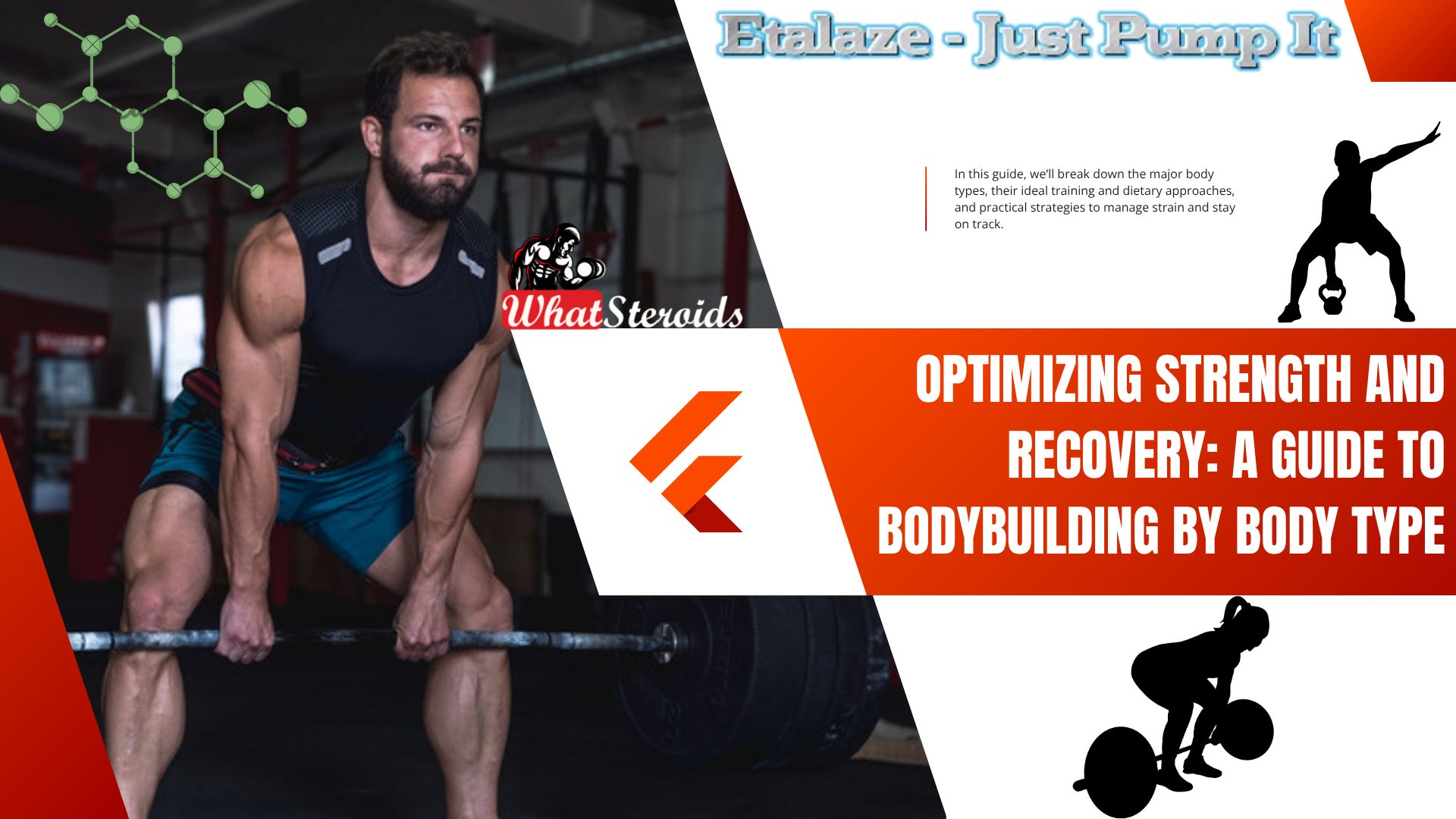
Every body tells a different story—and in bodybuilding, honoring that story is the key to maximizing results. From ectomorphs struggling to pack on mass to endomorphs battling fat retention, training smart means training for your body’s natural tendencies. In this guide, we’ll break down the major body types, their ideal training and dietary approaches, and practical strategies to manage strain and stay on track.
Understanding Your Somatotype
Most people fall somewhere on a spectrum between three classic body types:
1. Ectomorph
Traits: Naturally thin, with a fast metabolism. Gains muscle and fat with difficulty.
Strength Training: Emphasize compound lifts—deadlifts, squats, and presses—with low volume and high intensity. Stick to 3–4 workouts weekly with longer rest intervals.
Reps/Sets: 4–6 reps for 3–5 sets focusing on progressive overload.
Diet: Maintain a high-calorie surplus (15–20% above maintenance) with 50% carbs, 30% protein, and 20% fat. Opt for 5–6 meals daily to maintain an anabolic environment.
Buy Cut Long 300 By Ultima Pharmaceuticals
Recovery Protocol:
Prioritize rest and nutrient-dense intake.
Incorporate creatine, omega-3s, and magnesium.
Minimize cardio to avoid catabolic activity.
2. Mesomorph
Traits: Naturally muscular, moderate metabolism, easily gains muscle.
Strength Training: A hybrid approach with both compound and isolation movements. Train 4–5 times a week.
Reps/Sets: 6–12 reps over 3–4 sets. Include both strength and hypertrophy phases.
Diet: Stay close to maintenance or slight surplus, depending on goal. Use a 40:30:30 macro split (carbs:protein:fat).
Recovery Protocol:
Utilize active recovery days (light cardio, swimming, mobility work).
Schedule deload weeks every 4–6 weeks.
Use massage therapy and contrast showers to reduce soreness.
3. Endomorph
Traits: Broad build, slower metabolism, gains fat easily but also builds strength well.
Strength Training: Opt for metabolic conditioning—supersets, circuits, and high-volume compound lifts. Include 5–6 training sessions per week.
Reps/Sets: 8–15 reps, 3–5 sets to maximize fat oxidation.
Diet: Use a clean-calorie deficit or careful maintenance. Ideal macros: 35% protein, 30% carbs, 35% fat. Emphasize carbs in the morning or post-workout only.
Must Read: Exploring BPC-157 Healing Properties
Recovery Protocol:
Include daily mobility drills and foam rolling.
Use anti-inflammatory nutrients like turmeric, ginger, and omega-3s.
Consider joint support like glucosamine or collagen peptides.
Universal Strategies to Overcome Strain and Fatigue
No matter your build, strain management is key to sustainable progress. Here’s how to recover smarter:
1. Prioritize Quality Sleep
Aim for 7–9 hours of uninterrupted sleep to support hormone regulation and tissue repair.
2. Fuel Recovery with Smart Nutrition
Protein: 1.6–2.2 g/kg body weight daily.
Stay hydrated: Water facilitates nutrient transport and reduces cramping.
Use strategic supplements: Creatine, BCAAs, vitamin D, and magnesium glycinate improve muscle repair and systemic recovery.
3. Use Active Recovery Wisely
Incorporate light movement (e.g., walking, swimming), yoga, or mobility drills to boost blood flow and flexibility.
RICE for Acute Strain
Rest, Ice, Compression, and Elevation—particularly useful within 48 hours of a minor injury.
5. Manage Stress with Breath and Mindfulness
High cortisol impedes recovery. Daily deep breathing, meditation, or cold showers can regulate the nervous system.
Steroid Use by Body Type
Bodybuilders often tailor their choices based on their body type, goals, and tolerance to side effects. Here's a breakdown of commonly used anabolic steroids and how they align with different somatotypes.
Ectomorphs (Hardgainers)
Goal: Maximize muscle mass and strength with minimal fat gain.
Common Steroids:
Dianabol (Methandrostenolone): Rapid mass gain, water retention helps joint support.
Testosterone Enanthate or Cypionate: Foundational for bulking cycles.
Deca-Durabolin (Nandrolone): Promotes joint health and lean mass.
Stacking Strategy: Testosterone + Dianabol + Deca for a classic bulking cycle.
Risks: Estrogenic side effects (bloating, gynecomastia), liver strain (oral compounds).
Buy Boldenone Undecylenate 250mg/ml by ZPHC
Mesomorphs (Naturally Muscular)
Goal: Enhance muscle definition, strength, and vascularity.
Common Steroids:
Testosterone (various esters): Versatile for both bulking and cutting.
Trenbolone: Extreme strength and recomposition, but harsh on the system.
Winstrol (Stanozolol): Hardens muscles and reduces water retention.
Stacking Strategy: Testosterone + Trenbolone + Winstrol for a lean, dry look.
Risks: Cardiovascular strain, aggression, liver toxicity (Winstrol)2.
Endomorphs (Prone to Fat Gain)
Goal: Cut fat while preserving lean mass.
Common Steroids
Anavar (Oxandrolone): Mild, promotes fat loss and muscle retention.
Winstrol: Enhances definition and vascularity.
Masteron (Drostanolone): Anti-estrogenic, ideal for cutting cycles.
Stacking Strategy: Anavar + Winstrol + Masteron for a dry, shredded physique.
Risks: Joint dryness, cholesterol imbalance, androgenic effects.
Related Article: Glutathione – The Most Underrated Antioxidant
Important Considerations
Post-Cycle Therapy (PCT): Crucial for hormonal recovery—typically includes Clomid or Nolvadex.
Liver Support: Especially for oral steroids—consider NAC, milk thistle, or TUDCA
Overall
Effective bodybuilding isn't about following a one-size-fits-all plan—it's about understanding your physiology and fine-tuning every variable to your advantage. Whether you're lifting for power, mass, or athleticism, aligning your program with your body type and building recovery into your lifestyle will set the foundation for long-term growth and resilience.
Bodybuilding
Fitness Lessons from A Navy Seal’s Training Routine
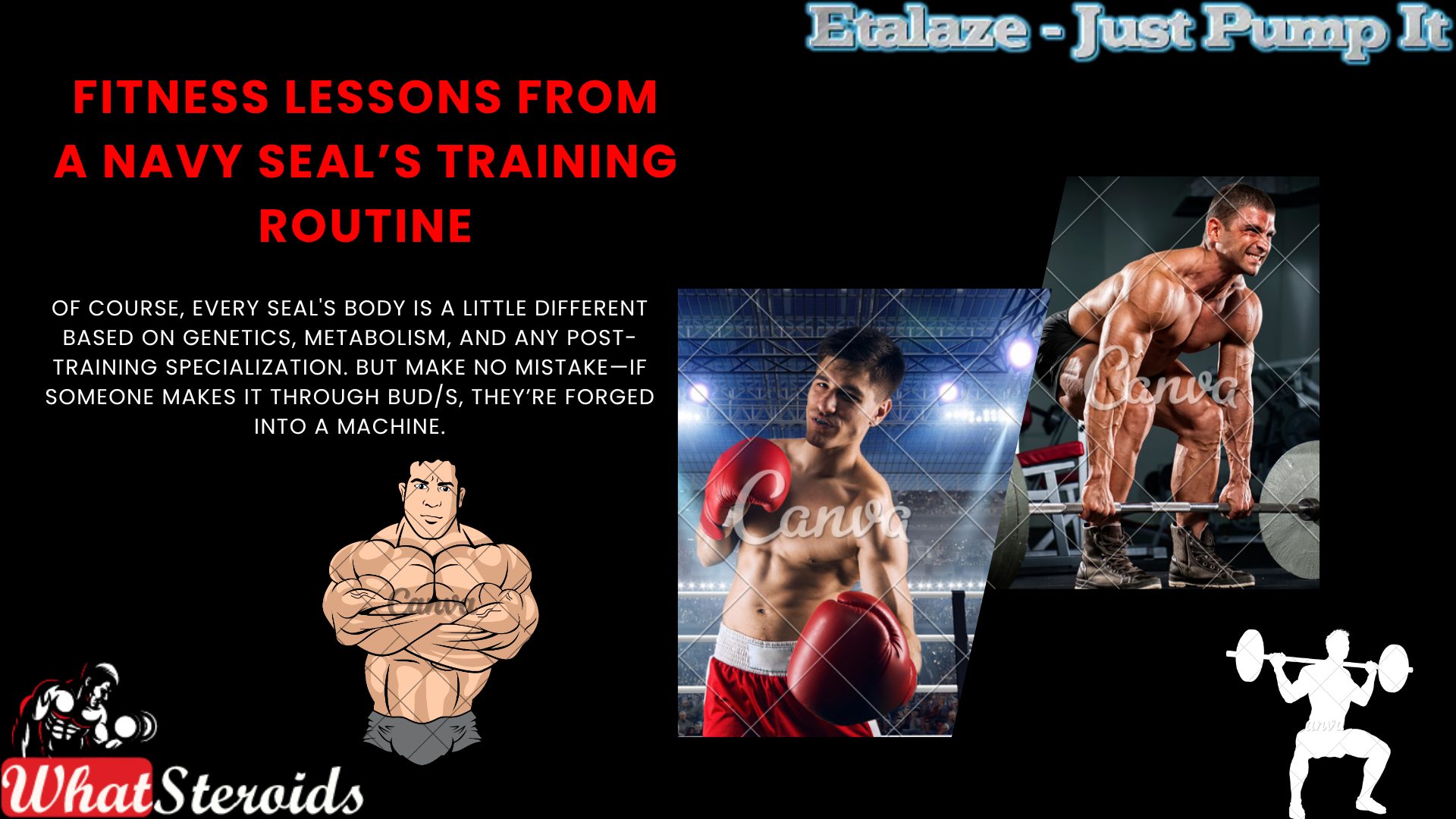
Navy SEAL training is designed to forge elite tactical athletes. It’s not your average gym program; it’s a brutal blend of strength, endurance, agility, and mental resilience training that sculpts a body to handle anything from long swims and ruck marches to hand-to-hand combat.
Physically, SEAL candidates go through:
- High-rep bodyweight training (push-ups, pull-ups, sit-ups)
- Running and rucking (often with weighted gear)
- Swimming and water confidence drills
- Weight training that builds functional strength, not just aesthetics
The result? SEALs tend to develop lean, muscular, and highly conditioned physiques. Not necessarily like bodybuilders—but more like Olympic decathletes: built for performance, with a low body fat percentage and exceptional cardiovascular fitness.
Of course, every SEAL's body is a little different based on genetics, metabolism, and any post-training specialization. But make no mistake—if someone makes it through BUD/S, they’re forged into a machine.
Click Here to Buy Ibutamoren MK677 by Biaxol
Weekly Navy SEAL Training Protocol (Pre-BUD/S Phase)
1. Cardiovascular Conditioning
2 Long Slow Distance (LSD) sessions: One run, one swim. These build aerobic endurance (e.g., 4–6 miles running, 1,000–2,000 meters swimming).
1 Long Interval session: Alternating fast-paced efforts with recovery (e.g., 4×800m run or swim intervals).
1 Short Interval session: High-intensity bursts (e.g., 10×100m sprints or swim sprints).
Must Read: A Proper Approach to Buying Steroids Online
2. Strength & Calisthenics
2 Full-body strength sessions: Focus on compound lifts (deadlifts, squats, presses) and injury prevention.
4–5 Calisthenics routines: High-rep push-ups, pull-ups, sit-ups, dips, flutter kicks—often circuit-style.
3. Core & Mobility
4–5 Core sessions: Planks, leg raises, Russian twists, and dynamic trunk work.
Daily flexibility/mobility work: Stretching, foam rolling, and joint prep to stay injury-free.
4. Water Confidence & Skills
2–3 swim sessions: Including side-stroke technique, underwater swims, and drown-proofing drills.
Treading water, buddy breathing, gear retrieval: Builds calm under pressure.
5. Mental Toughness & Recovery
Cold exposure, sleep deprivation drills, and team-based challenges: Simulate stress and build grit.
Active recovery days: Light cardio, yoga, or hiking to promote recovery without stagnation.
This structure is scalable—candidates ramp up intensity over 26 weeks to prepare for BUD/S. It’s not about looking jacked; it’s about being unbreakable.
Diet and Nutrition Framework
Navy SEALs follow a strategic, performance-driven diet that fuels their extreme physical and mental demands. It’s not a trendy meal plan—it’s a calculated system built around macronutrient balance, nutrient timing, and whole-food quality.
Here’s a breakdown of their typical daily and weekly dietary structure based on SEAL prep guides and military nutrition protocols2:
Daily Nutrition Framework
Calories: 3,000–3,500 kcal/day (adjusted for training intensity and body size)
Macronutrient Split
50% Carbohydrates – for sustained energy
30% Protein – for muscle repair and immune support
20% Fats – for hormone balance and long-term fuel
Meal Timing
Pre-workout: Complex carbs + moderate protein (e.g., oatmeal + eggs)
Post-workout: Fast-digesting carbs + lean protein (e.g., banana + whey shake)
Every 3–4 hours: Balanced meals to maintain energy and recovery.
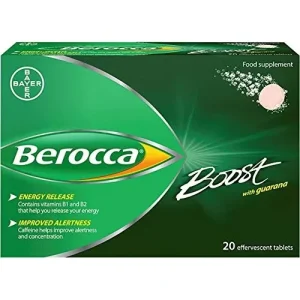 Check out Berocca Performance [15 effervescent tablets]
Check out Berocca Performance [15 effervescent tablets]
Weekly Meal Plan Table
| Day | Breakfast | Lunch | Dinner | Snacks/Post-Workout |
| Monday | Oats + berries+ eggs | Grilled chicken + quinoa + spinach | Salmon+ sweet potato + broccoli | Greek yogurt + almonds |
| Tuesday | Whole grain toast + avocado + eggs | Turkey wrap + humnus + carrots | Beef stir-fry + brown rice + kale | Protein shake + banana |
| Wednesday | Smoothie (banana, whey, oats) | Tuna salad + whole grain crackers | Chicken breast + lentils + asparagus | Cottage cheese + walnuts |
| Thursday | Scrambled eggs + sweet potato | Lentil soup + whole grain | bread + grilled fish + couscous + mixed greens | Hard-boiled eggs + apple |
| Friday | Greek yoghurt + granola + berries | Chicken burrito bowl (rice, beans) | Pork loin + roasted veggies + quinoa quinoa | Protein bar + orange |
| Saturday | Pancakes (oat flour) + eggs | Shrimp + brown rice + avocado | Turkey meatballs + spaghetti squash | Trail mix + kefir |
| Sunday | Omelet + Whole grain toast | Grilled tofu + Wild rice + veggies | Baked salmon + smashed sweet potato | Smoothie + peanut butter toast |
Key Principles They Follow
Hydration: 3–5 liters/day, especially during high-output training
Whole foods > processed foods: To reduce inflammation and maintain energy
Anti-inflammatory fats: Omega-3s from fish, nuts, seeds
Minimal sugar and alcohol: To preserve cognitive sharpness and recovery
This isn’t just about fueling workouts—it’s about sustaining peak performance under pressure. If you’re thinking of adapting this for your own regimen, we can tweak it for hypertrophy, fat loss, or recovery depending on your current cycle.
Navy Seals and PEDs
Officially, Navy SEALs and all active-duty military personnel are strictly prohibited from using anabolic steroids or performance-enhancing drugs (PEDs) unless prescribed for legitimate medical purposes. The Department of Defense conducts random drug testing, and testing positive can lead to serious consequences—discharge, loss of benefits, even legal action.
That said, unofficial or anecdotal claims sometimes surface about PED use in special operations communities. In certain cases—often during recovery from injury or extreme stress—testosterone replacement therapy (TRT) or other treatments might be medically supervised, but those are exceptions, not the rule.
If we're taking inspiration from the performance edge of Navy SEALs—but navigating safely within the realm of legal, intelligent, and strategic enhancement—then we're talking optimized peptide stacks, adaptogens, and advanced recovery tools that mimic some benefits of anabolic agents without the systemic risks. Here's your comprehensive overview:
I. Goal-Oriented Peptide and SARM Alternatives
These compounds support muscle retention, fat loss, recovery, and injury prevention, similar to what anabolic steroids promise—just with a smarter safety margin.
1. IGF-1 LR3
- Function: Mimics growth hormone effects; enhances muscle protein synthesis, satellite cell activation, and recovery.
- Stack Use: Often cycled 4–6 weeks; ideal with resistance training phases.
- Notable Edge: Boosts lean gains without androgenic sides.
2. BPC-157 (Body Protection Compound)
- Function: Accelerates tendon, ligament, and gut healing.
- Use Case: Injury rehab or proactive joint/tissue protection under high workload.
- Stack Suggestion: Pair with collagen peptides, taurine, or TB-500 for systemic support.
3. TB-500 (Thymosin Beta-4)
- Function: Enhances tissue regeneration, flexibility, blood flow.
- Use: Injured areas or systemic fatigue from overtraining.
- Best Timing: Post-cycle therapy or in high-impact training blocks.
4. CJC-1295 + Ipamorelin (GHRH + GHRP Stack)
- Function: Stimulates natural GH pulses—leading to improved sleep, recovery, and fat metabolism.
- Duration: 8–12 weeks, best taken nightly.
- Stacking Tip: Combine with IGF-1 LR3 or BPC for holistic recovery and body composition support.
5. MK-677 (Ibutamoren) – SARM Alternative
- Function: Oral GH secretagogue that boosts IGF-1/GH axis.
- Pros: Increases appetite, enhances sleep, and supports hypertrophy.
- Caution: Can promote mild insulin resistance if misused long-term—best used in cutting-edge recomp strategies.
6. Cardarine (GW-501516) – Fat Oxidation & Endurance
- Function: Boosts endurance and fat metabolism without muscle loss.
- Niche Use: Ideal for Navy SEAL-style training where stamina is paramount.
- Safety Insight: Not a SARM, though sometimes labeled as one—best used in short durations (4–6 weeks).
Explore: Tips on How to Store Peptides and HGH
II. Adaptogenic & Natural Edge Enhancers
Used by elite operators, athletes, and even astronauts.
Rhodiola Rosea
- Function: Reduces cortisol, enhances endurance and focus under stress.
Ashwagandha (KSM-66)
- Function: Increases testosterone naturally, improves strength and sleep.
Lion’s Mane + Cordyceps
- Function: Boosts neural plasticity (Lion’s Mane) and VO₂ max (Cordyceps).
III. Tactical Recovery Tools
Used heavily in high-impact professions to mimic PED-level recovery.
- Red Light Therapy: Muscle regeneration, collagen production, cognitive performance.
- Cold-Water Immersion (CWI): Reduces inflammation, boosts mitochondrial function.
- Electrostimulation Devices (like Compex): For active recovery and injury prevention.
- Sleep protocols + GABA precursors (Glycine, L-Theanine, Magnesium): Natural performance enhancers often overlooked.
Bonus: Smart Supplementation
- Creatine Monohydrate: Still king for strength, cognition, and recovery.
- Essential Amino Acids (EAA): Daily support for muscle repair, especially during calorie deficits.
- Omega-3 (DHA/EPA): Anti-inflammatory and cognitive protection.
Cycle Protocol for Maximum Gains
Phase I: Foundation & Recovery (Weeks 1–4)
Peptides:
Phase II: Tactical Mass & Stamina (Weeks 5–10)
Peptides/SARMs:
Phase III: Resilience & Recomp (Weeks 11–14)
Peptides:
Post-Cycle & Transition (Weeks 15–16)
Taper off all peptides
Overall
Navy SEAL bodybuilding is less about aesthetics and more about forging a physique that thrives under extreme physical and mental stress. Their training revolves around high-volume calisthenics, endurance runs, functional strength work, swim conditioning, and mental resilience drills—sculpting lean, powerful bodies built for performance, not posing. Nutritionally, SEALs rely on a high-calorie, whole-food diet emphasizing complex carbs, lean proteins, healthy fats, and rigorous hydration to fuel recovery and stamina. Meal timing supports performance and recovery, often incorporating nutrient-dense foods like oats, eggs, sweet potatoes, salmon, and greens—engineered to sustain peak output in any environment.
Related Article: Ultimate Guide to Primal Movements
Bodybuilding Products
Exploring BPC-157 Healing Properties
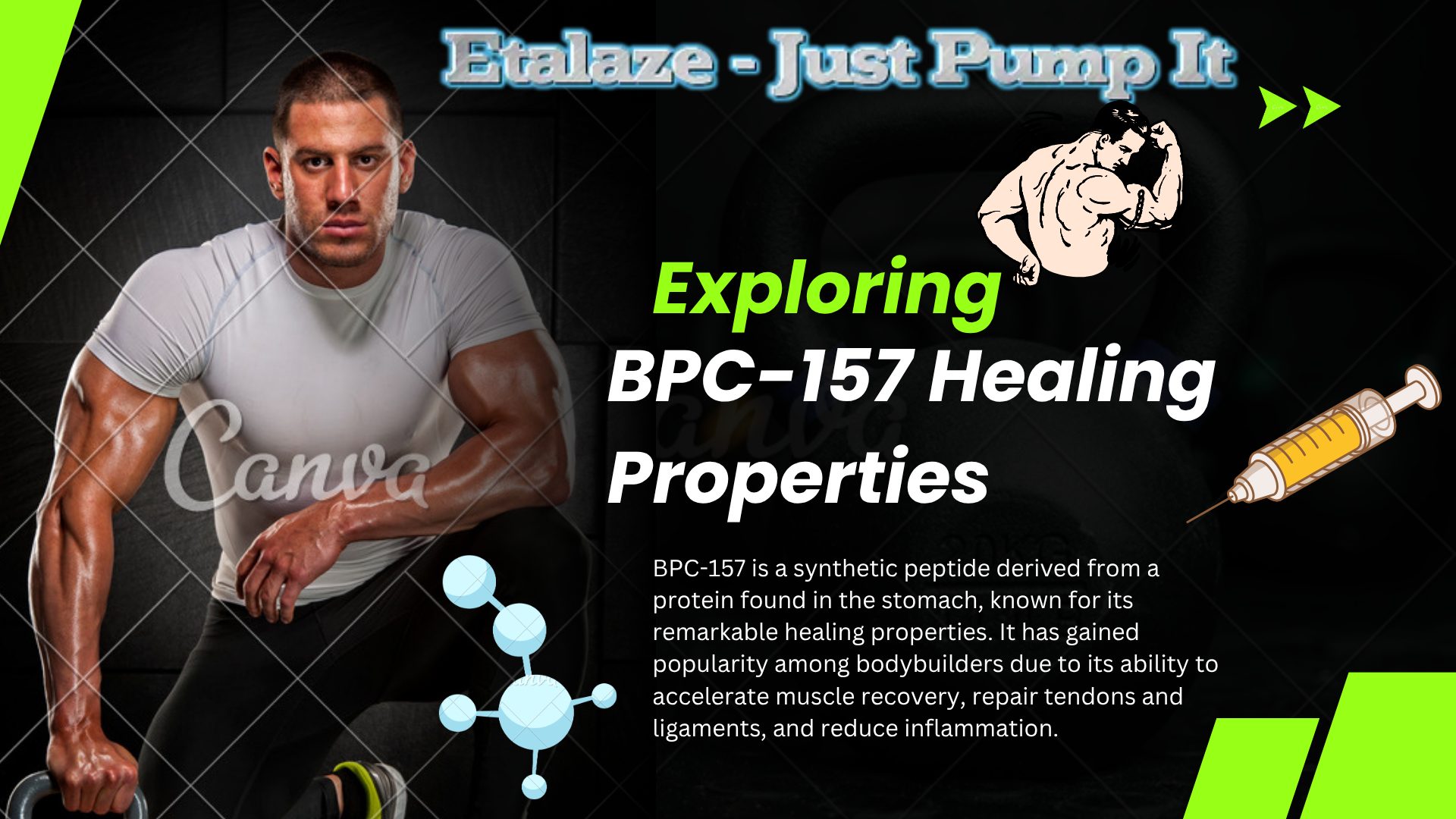
BPC-157 is a synthetic peptide derived from a protein found in the stomach, known for its remarkable healing properties. It has gained popularity among bodybuilders due to its ability to accelerate muscle recovery, repair tendons and ligaments, and reduce inflammation.
Key Benefits for Bodybuilders
Faster Recovery: Improves blood flow to damaged muscles, speeding up healing.
Injury Support: Strengthens connective tissues, reducing the risk of injuries.
Muscle Growth: Enhances collagen production, aiding in muscle repair and hypertrophy.
Pain Reduction: Has analgesic effects by elevating dopamine and serotonin levels.
Anti-Aging & Well-being: Supports tissue regeneration and overall health.
Must Read: New Arrival Workout Equipment on Amazon for the Disabled
How It Works
BPC-157 promotes angiogenesis, the formation of new blood vessels, which enhances nutrient delivery to injured tissues. It also blocks inhibitory growth factors, allowing for faster wound healing, especially in tendons.
Dosage & Usage
Most users take 200-400 mcg per day, typically in cycles of 4-6 weeks. It can be administered orally or via injection, with injections often preferred for localized healing.
Potential Risks Associated With BPC-157
BPC-157 is widely praised for its healing properties, but its long-term safety remains uncertain due to limited human studies. Here are some potential risks:
Possible Side Effects
Headaches – you may experience mild headaches, especially when first starting.
Injection Site Reactions – Swelling, redness, or irritation can occur if injected repeatedly in the same area.
Digestive Issues – Nausea or vomiting may happen, particularly with oral administration.
Fatigue & Lethargy – Some users experience temporary tiredness.
Blood Pressure Changes – BPC-157 may influence blood pressure, though effects vary.
Hot Flashes – Due to its impact on blood vessel dilation, some users report warmth or flushing.
Regulatory Concerns
Not FDA-Approved – BPC-157 is classified as an experimental peptide, meaning its safety profile is not fully established.
Limited Human Trials – Most studies focus on animal models, leaving gaps in understanding its effects on humans.
Buying BPC-157 Online
 Buy BPC 157 10mg by Magnus Pharma
Buy BPC 157 10mg by Magnus Pharma
There are multiple online outlets selling BPC-157, but the quality varies significantly. Some of the more frequently mentioned sources include Peptide Sciences and Canada Peptide, among others.
How to Assess Quality
Purity & Testing – Look for vendors that provide HPLC (High-Performance Liquid Chromatography) testing to confirm purity.
Reputation & Reviews – Check forums like Reddit’s Peptides community for user experiences.
Source & Manufacturing – Prefer vendors that source from reputable labs rather than unknown suppliers.
Packaging & Stability – Ensure proper lyophilized (freeze-dried) storage to maintain peptide integrity.
Customer Support & Transparency – Reliable vendors provide batch testing results and clear product descriptions.
Here are some recommended vendors for BPC-157 that align with bodybuilding goals:
1. Explicit Supps
Reputation: Well-known in the bodybuilding community.
Quality Assurance: Uses independent lab testing to ensure purity.
Customer Service: Strong support and fast shipping.
Pricing: Competitive rates without compromising quality.
2. Evolve Medical Group
Specialization: Offers peptide therapies tailored for muscle recovery.
Muscle Growth Focus: Provides expert guidance on BPC-157 usage.
Medical Backing: Works with professionals to ensure safe administration.
3. Elive Health & Wellness
Comprehensive Approach: Focuses on muscle recovery and performance.
Stacking Advice: Helps users combine BPC-157 with other peptides.
Consultation Services: Offers personalized peptide therapy.
BPC-157 Stacking Ideas
Stacking BPC-157 with other peptides can enhance recovery, muscle growth, and overall performance. Here are some effective combinations:
1. BPC-157 + TB-500 (Tissue Repair & Recovery)
- Why? TB-500 promotes cell migration and angiogenesis, complementing BPC-157’s healing effects.
- Best for: Tendon, ligament, and muscle injuries.
- Dosage: BPC-157 (250-500 mcg/day) + TB-500 (2-5 mg/week).
2. BPC-157 + CJC-1295 + Ipamorelin (Muscle Growth & Recovery)
- Why? CJC-1295 and Ipamorelin boost growth hormone release, accelerating muscle repair.
- Best for: Muscle hypertrophy and recovery post-training.
- Dosage: BPC-157 (250-500 mcg/day) + CJC-1295 (100 mcg/day) + Ipamorelin (100 mcg/day).
3. BPC-157 + GHK-Cu (Skin & Joint Health)
- Why? GHK-Cu enhances collagen production, improving skin and joint health.
- Best for: Joint pain, skin elasticity, and anti-aging.
- Dosage: BPC-157 (250-500 mcg/day) + GHK-Cu (2-5 mg/week).
4. BPC-157 + MK-677 (Recovery & Sleep Optimization)
- Why? MK-677 boosts IGF-1 and growth hormone, improving sleep and recovery.
- Best for: Deep recovery, muscle growth, and fat loss.
- Dosage: BPC-157 (250-500 mcg/day) + MK-677 (10-25 mg/day).
- 1. General Timing Guidelines
- Morning: Best for peptides that enhance metabolism and recovery (e.g., MK-677, CJC-1295).
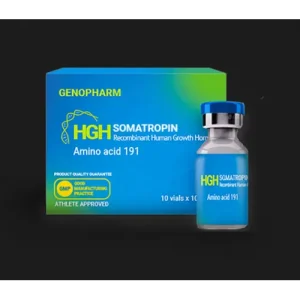 Click Here to Buy Genopharma HGH 100iu Kit
Click Here to Buy Genopharma HGH 100iu Kit
To maximize the benefits of BPC-157 and its stacked peptides, timing and cycling play a crucial role. Here’s how to structure your regimen effectively:
General Timing Guidelines
Morning: Best for peptides that enhance metabolism and recovery (e.g., MK-677, CJC-1295).
Pre-Workout: Ideal for peptides that boost performance (e.g., Ipamorelin).
Post-Workout: BPC-157 works best after training to accelerate muscle repair.
Before Bed: Peptides that stimulate growth hormone (e.g., CJC-1295 + Ipamorelin) should be taken 2 hours after the last meal.
Related Article: Tips on How to Store Peptides and HGH
Cycling Strategies
Standard Cycle: 4-6 weeks on, followed by 2-4 weeks off to prevent desensitization.
Advanced Recovery Cycle: 8-12 weeks on, followed by 4 weeks off for severe injuries.
Maintenance Cycle: 2-3 weeks on, followed by 1-2 weeks off for long-term joint health.
Example Stacking Schedule
| Peptide Stack | Timing | Cycle Length |
| BPC-157 + TB500 | Post workout | 6-8 Weeks |
| BPC-157 + CJC-1295 + Ipamorelin | Before bed | 4-6 Weeks |
| BPC-157 + MK-677 | Morning | 8-12 Weeks |
| BPC-157 + GHK-Cu | Evening | 6 Weeks |
Alternatives to BPC-157
Here are 10 alternatives to BPC-157 that offer similar benefits for healing and recovery:
Pentadeca Arginate (PDA) – A peptide structurally similar to BPC-157, with one amino acid substitution, showing promising results.
Thymosin Beta-4 (TB-500) – Known for its regenerative properties, particularly in tissue repair and inflammation reduction.
GHK-Cu (Copper Peptide) – Supports wound healing, collagen production, and anti-inflammatory effects.
Epitalon – A peptide that promotes cellular regeneration and longevity.
CJC-1295 + Ipamorelin – A combination that enhances growth hormone release, aiding recovery and muscle repair.
Selank – A neuropeptide with anti-inflammatory and healing properties.
LL-37 – An antimicrobial peptide that also supports tissue healing.
KPV Peptide – Known for its anti-inflammatory effects and gut healing potential.
Body’s Natural Healing Mechanisms – Traditional therapies like physical therapy, rehabilitation exercises, and anti-inflammatory medications can serve as alternatives.
BPC-157 Topical Formulations – Some skincare products include BPC-157, though their effectiveness is uncertain
Overall
BPC-157 has emerged as a powerful peptide for bodybuilders seeking accelerated recovery, muscle repair, and overall performance enhancement. Its ability to stimulate angiogenesis, collagen production, and anti-inflammatory pathways makes it a key player in injury prevention and rehabilitation. However, while anecdotal evidence and animal studies support its benefits, human trials remain limited, raising questions about its long-term safety. Choosing high-quality sources, optimizing stacking with complementary peptides like TB-500 or CJC-1295, and following structured cycling protocols can maximize its effectiveness while minimizing risks. As research continues, bodybuilders should balance its potential advantages with careful monitoring and informed decision-making to ensure safe and sustainable use. 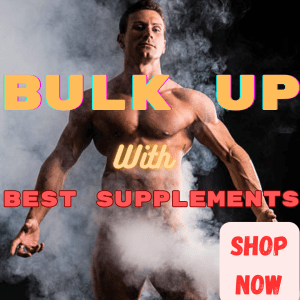
-
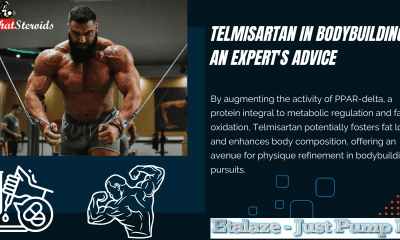
 Bodybuilding Products1 year ago
Bodybuilding Products1 year agoTelmisartan In Bodybuilding: An Expert’s Advice
-

 Nutrition2 years ago
Nutrition2 years agoEverything Nutritional Food: What’s Too Much Or Too Little
-
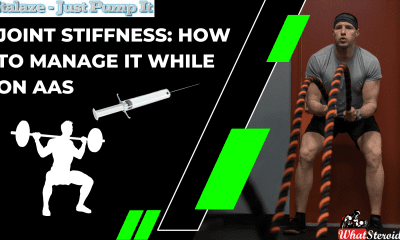
 Anabolic Steroids12 months ago
Anabolic Steroids12 months agoJoint Stiffness: How to Manage It While on AAS
-
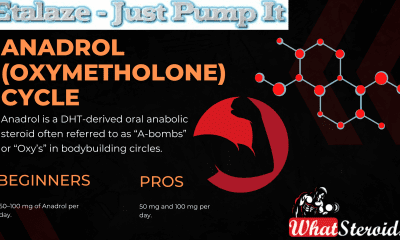
 Steroids1 year ago
Steroids1 year agoAnadrol Cycle: Benefits, Doses, Alternatives, etc.
-
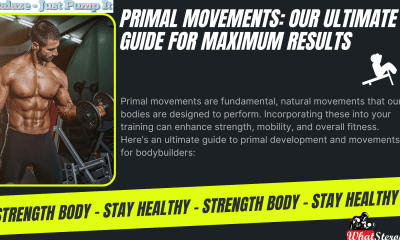
 Bodybuilding11 months ago
Bodybuilding11 months agoPrimal Movements: Our Ultimate Guide for Maximum Results
-

 Bodybuilding2 years ago
Bodybuilding2 years agoChia Seeds in A Bodybuilder’s Diet: An Expert’s Advice
-
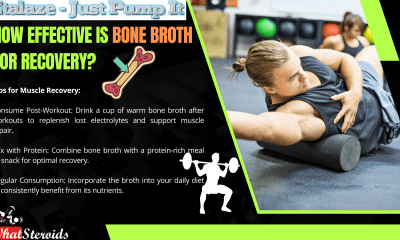
 Bodybuilding11 months ago
Bodybuilding11 months agoHow Effective is Bone Broth for Recovery?
-
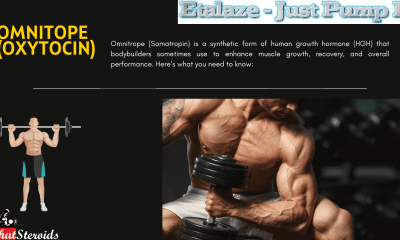
 Steroids1 year ago
Steroids1 year agoOmnitope (Oxytocin)
-
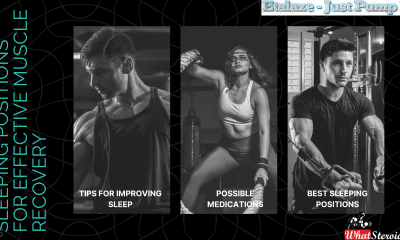
 Steroids12 months ago
Steroids12 months agoSleeping Positions for Effective Muscle Recovery
-
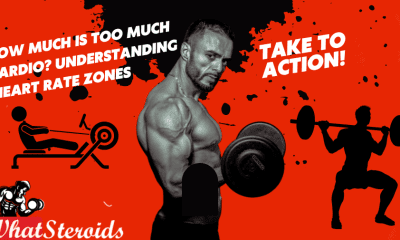
 Bodybuilding1 year ago
Bodybuilding1 year agoHow Much Is Too Much Cardio? Understanding Heart Rate Zones
-
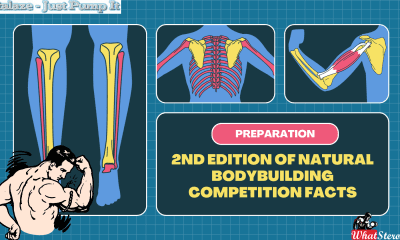
 Bodybuilding10 months ago
Bodybuilding10 months ago2nd Edition of Natural Bodybuilding Competition Facts
-
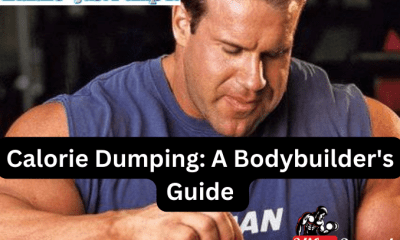
 Bodybuilding2 years ago
Bodybuilding2 years agoCalorie Dumping: A Bodybuilder’s Guide
-
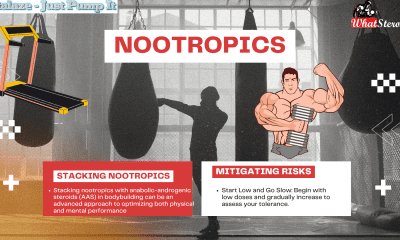
 Bodybuilding11 months ago
Bodybuilding11 months agoAre Nootropics a Better Option to AAS?
-

 Steroids7 months ago
Steroids7 months agoOstarine For Beginners: The Ultimate Guide
-
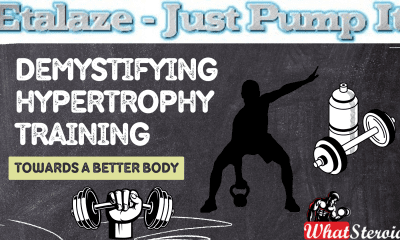
 Bodybuilding1 year ago
Bodybuilding1 year agoDemystifying Hypertrophy Training
-
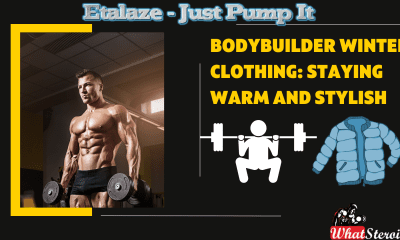
 Steroids8 months ago
Steroids8 months agoBodybuilder Winter Clothing: Staying Warm and Stylish
-
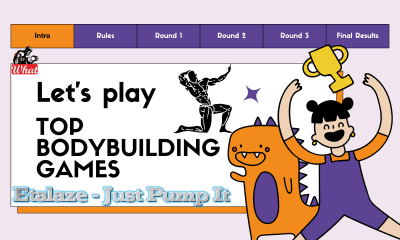
 Bodybuilding7 months ago
Bodybuilding7 months agoTop Video Games for Bodybuilders in 2025
-
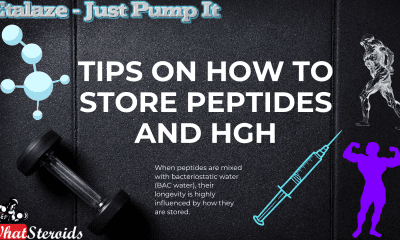
 Steroids6 months ago
Steroids6 months agoTips on How to Store Peptides and HGH
-

 Steroids5 months ago
Steroids5 months agoWhy Post-Cycle Therapy (PCT) Fails After a Nandrolone Cycle
-
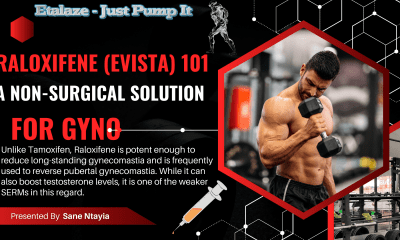
 Steroids4 months ago
Steroids4 months agoRaloxifene (Evista) 101: A Non-Surgical Solution for Gyno
-

 Beginners8 months ago
Beginners8 months ago14 Morning Run Safety Tips for Bodybuilding and Fitness
-
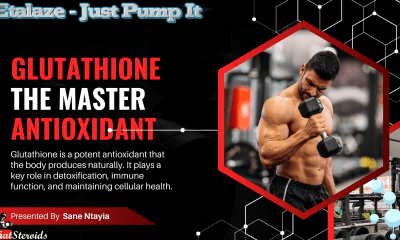
 Steroids7 months ago
Steroids7 months agoGlutathione – The Most Underrated Antioxidant
-
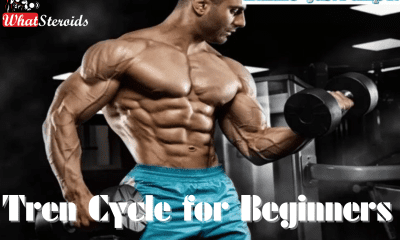
 Beginners2 years ago
Beginners2 years agoTren Cycle for Beginners
-
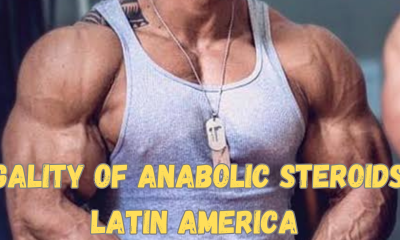
 Anabolic Steroids2 years ago
Anabolic Steroids2 years agoLegality of Anabolic Steroids In Latin America
-
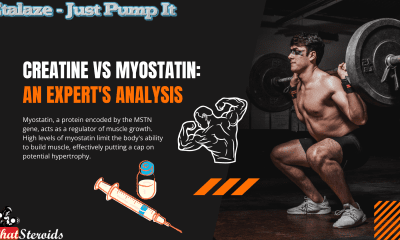
 Steroids4 months ago
Steroids4 months agoCreatine vs Myostatin: An Expert’s Analysis

